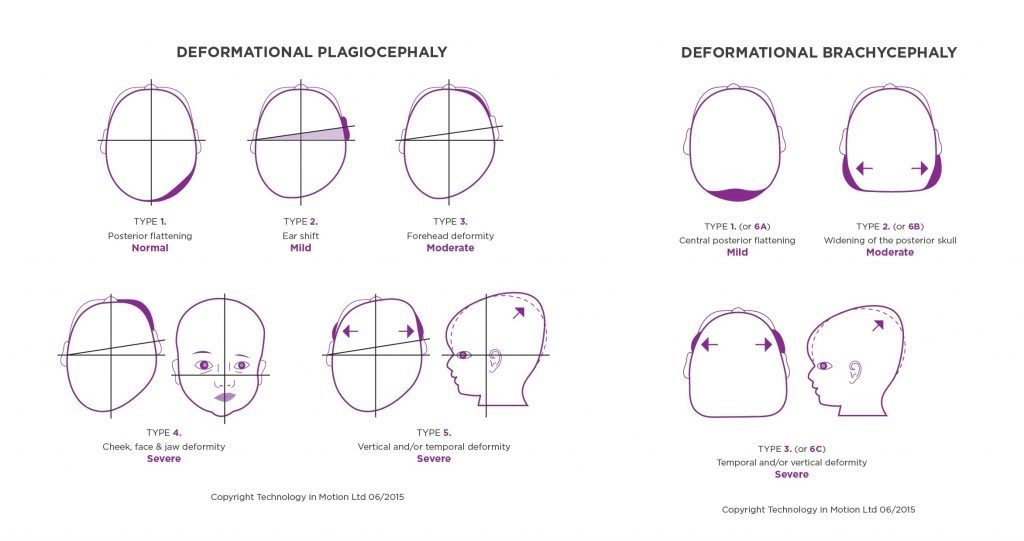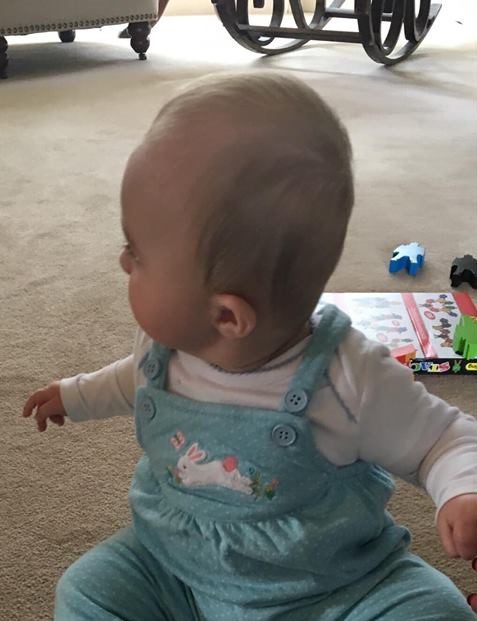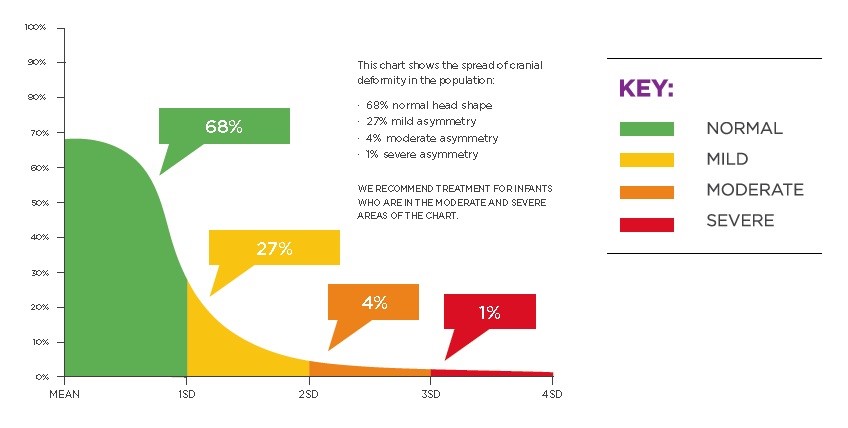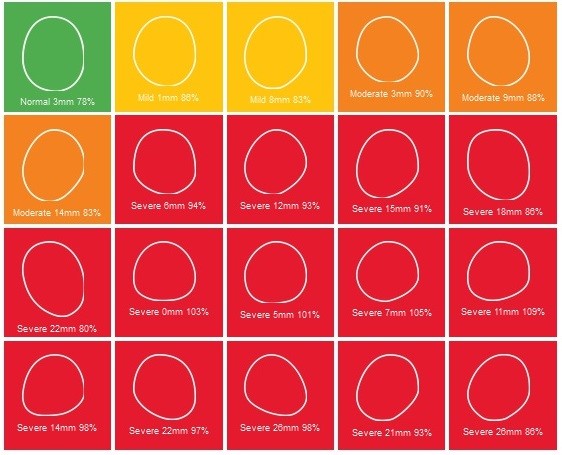
In many cases, flat head syndrome will self-correct through repositioning, bringing it within the normal range if carried out correctly. However, where infants have a moderate or a severe flat head, this is unlikely to improve significantly without further intervention.
The question is, what constitutes mild, moderate and severe flat head syndrome?
Measuring Severe Plagiocephaly
Plagiocephaly is a relatively common condition and many parents usually notice that their babies have developed a flattening at around eight weeks of age. In the UK, it’s not uncommon for parents to be reassured by their Health Visitor (HV) and General Practitioners (GP) that their baby’s head will self-correct over time and not to be concerned, regardless of whether the condition is considered mild or severe.
Health Visitors and GPs adhere to NHS guidelines and the general advice is that all types of plagiocephaly will self-correct to some degree. With little information provided other than this advice, parents are then left to consider whether their baby has severe flat head syndrome and what other treatment options are available.
Head shapes can be categorised as normal, mild, moderate or severe and this depends on how far the head shape differs from the norm before treatment.
To help parents and clinicians, a scale of deformity, developed by Dr Louis Argenta is used to describe the severity of head shape deformities. This is then used as part of the decision making process of whether to go ahead with helmet treatment.

He has divided the head shapes into two groups. Firstly, plagiocephaly measures the diagonal symmetry from the outside corner of the eye to the high spot on the other side at the back of the head on both sides. The angle from the centre line is usually measured at 30 or 40 degrees from the midline. The difference in measurement can be described as a number by subtracting one from the other, this is known as the Cranial Vault Asymmetry (CVA).
It can also be described as a percentage by dividing the higher number by the lower one and multiplying by 100. The percentage scale, known as the Olbique Diagonal Difference Index (ODDI) is used in continental Europe and the number measurement is used in the UK and USA / North America.
Classifying Plagiocephaly
For plagiocephaly there are five classifications:
- Grade 1. A mild posterior flattening on one quadrant of the head; this is classed as normal head shape.
- Grade 2. Additional forward ear shift on the same side as the flattening which is classed as a mild deformity.
- Grade 3. Additional forehead prominence on the same side as the flattening – a moderate deformity.
- Grade 4. Additional cheek, face and jaw asymmetry on the same side as the flattening of the head, this is classed as a severe.
- Grade 5. Vertical and temporal deformity is classed as severe.

We carry out a visual inspection of all our patients and use diagonal measurements to calculate the Cranial Vault Asymmetry (CVA) in order to determine the severity of plagiocephaly. This takes into account the difference between the diagonal head shape measurements to establish whether the head can be categorised as either mild, moderate or severe plagiocephaly.
Argenta has also classified a wide head shape, known as brachycephaly and it is not uncommon to see a combination of plagiocephaly and brachycephaly appearing at the same time.
Brachycephaly is described using three classification scales.
- Grade 1. A flattening at the centre back of the head with no increase in width of the bones. This is classified as mild.
- Grade 2. A flattening with widening of the posterior skull.
- Grade 3. A flattening and widening of the posterior skull with increased height at the back and flexing of the temporal bones at the side.
Assessing the Severity of Head Shape Deformity
In an initial consultation and assessment of a baby’s head shape, three measurements are taken: circumference, width as a percentage of length from front to back, and diagonal difference. We then classify the severity on how much these measurements deviate from what is classed as the population norm.
As the normal standard deviation chart below demonstrates, treatment is recommended for the most severe five percent of infants, who fall within the moderate and severe ranges.

In a normal head shape (normocephaly), the width of the head is 78 to 83 percent of its length, and the diagonal asymmetry is no more than 6mm. If you were looking down on the head from above, the head appears as an egg or pear shape. This is the green image in the top left hand side of the diagram above.
An asymmetry of over 12mm is considered moderate, whilst a difference of over 18mm is regarded as a severe flat head. We often see asymmetries of over 25mm as well as head shapes than are wider than they are long, at significantly over 100%.

The relationship between diagonal asymmetry and width to length ratio varies, with some combinations considered more severe, and therefore more difficult to fully correct, than the milder head shapes.
Monitoring Progress During Plagiocephaly Treatment
To make it easy for parents to monitor the progress of their babies’ flat head syndrome, we have devised an app where you can simply upload a picture and check the head shape against outlines of real babies who have been treated.
If you think your baby may have plagiocephaly, this handy tool helps you understand how severe the deformity is. Simply upload a clear photo of the head shape and we will show you a comparison of head shapes including babies who have undergone treatment with us. You can then see the comparison of the head shapes ‘before and after’ treatment to see the results of TiMbandAir treatment. These results are identified on our severity chart so that you can measure the improvement and see just how much improvement a plagiocephaly helmet can make to your baby’s head shape and way of life.
If you think your baby may fall into the moderate or severe plagiocephaly scale or would like a professional observation and diagnosis, Technology in Motion is here to help. We have clinics throughout the UK and offer free, no-obligation pre-assessment and expert advice. Call us on 0330 100 1800 to book an appointment, or browse our website for more information on plagiocephaly.


